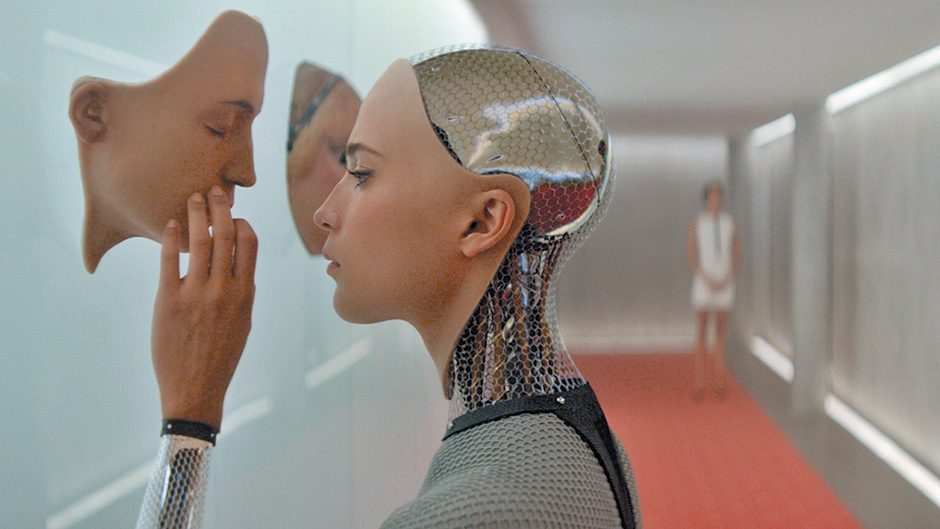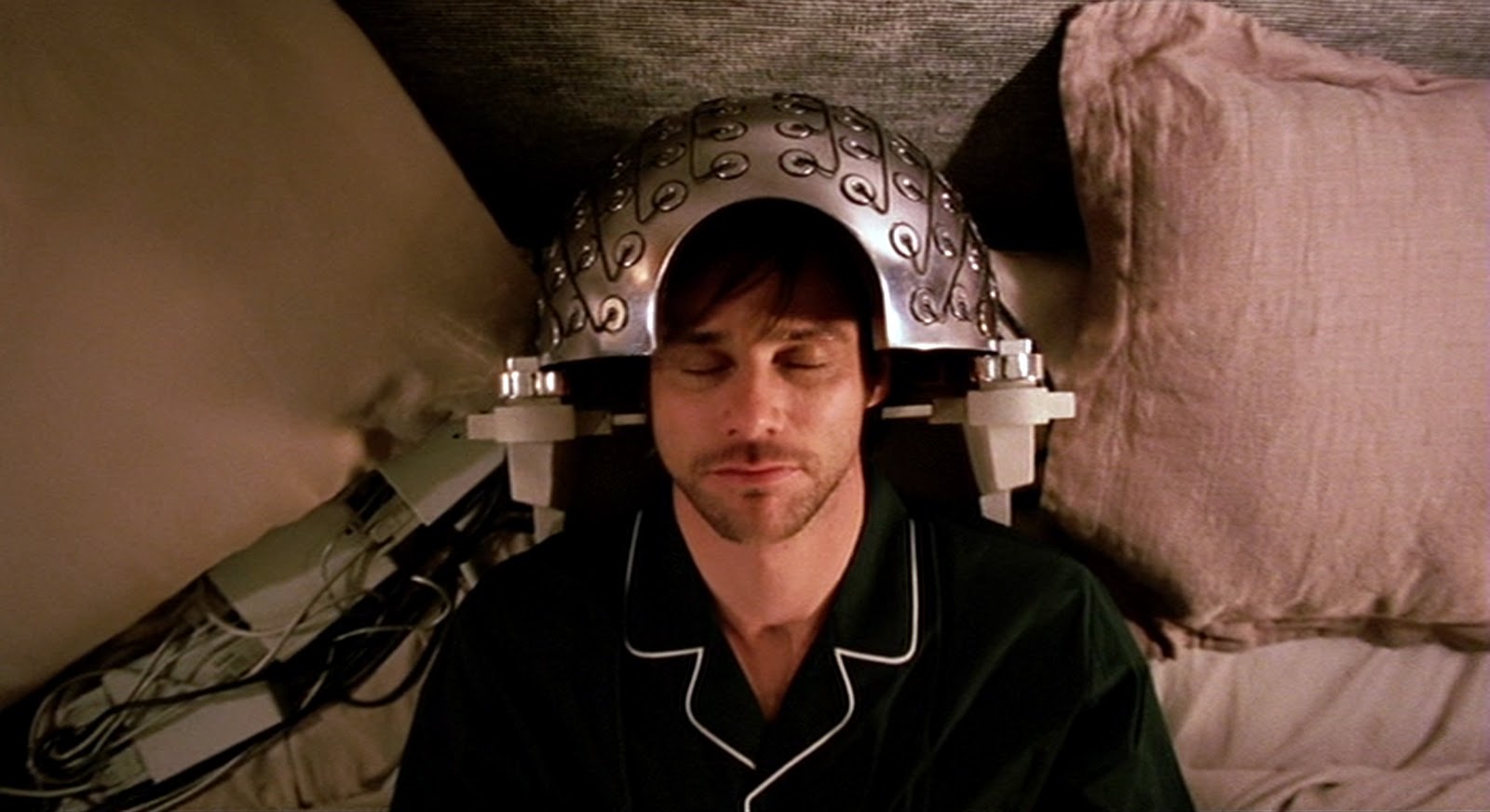
Many people regard science fiction cinema as a set of space adventure movies full of special effects and made with high budgets. Sheer entertainment, a treat for a Saturday night with a huge box of popcorns and a big recipient of soda with a straw… And yes, the majority of sci-fi films conform to this description.
But, as in literature, there are some science-fiction works that have much more to do with ideas than with spectacle. Of course, ideas and special effects aren’t incompatible -remember, for instance, 2001: An Odyssey of Space, Metropolis, Arrival, Alien, Blade Runner, all of them so great films-, but in a few movies ideas are put in the foreground, and they are so engrossing that spectators have no need of spectacular special effects or big settings to have a rewarding experience.
Let’s have a look at some of the best of these films. Please note that they appear in this post in reverse chronological order, as in a time travel story.
1. Ex Machina (USA, 2014, budget $ 15 million)

A programmer working for the main Internet search engine company is chosen to spend a week with the company’s CEO, who lives alone in an enclosed area in Alaska. In arriving, he learns that the CEO, Nathan Bateman, wants him to establish a relationship to an android with a highly developed A.I., called Ava, in order to find out if it can think and feel by itself, if it is a truly autonomous being.
This experiment goes far beyond the classical Turing Test (conceived to measure the intelligence of machines), because Ava is the most cutting-edge A.I. in history, to the point that it could be regarded as the first exponent of a new species that makes mere humanity obsolete…
So, young, brilliant programmer Caleb Smith begins to talk to Ava, to find out how its artificial mind works, in order to inform Nathan, who wants to know to what extent his new creation can live and think independently from what its god-like creator has programmed. Here we have to substitute pronoun “it” with “she”, because the robot, although displaying her machine interior, has a perfect human face that converts her in a woman. And Caleb’s interaction with her ends up being a sentimental relationship.
Caleb finds out that Nathan plans to update Ava, to erase all of her memory, and create a new model, more perfect, more cutting-edge. He learns as well that Nathan has built many other models before, each one more advanced than the previous one, in a sort of artificial evolutionary scale that, unlike the one described by Darwin, is driven and closely oriented by a god.
Focused on the same theme as Blade Runner -limits and overlaps between human and artificial intelligence and consciousness, Ex Machina is a highly original film that combines cool aesthetics, psycho-techno thriller plot and philosophical inquiry.
2. Moon (United Kingdom, 2009, budget $ 5 million)

Sam Bell is the only human worker of Lunar Industries in the far side of the Moon, where this company extracts helium 3, the new fuel that provides a clean source of energy to the earth. It is the near future and, surprisingly, humanity has overcome the climate emergency thanks to this new sort of fuel. Sam and the robots that work with him are making a big difference in this process.
The problem is that (warning: this paragraph contains a spoiler!) Sam discovers he is not exactly human, but a clone. When his contract of three years with Lunar is about to expire, he begins to feel sick and suffers hallucinations. He has an accident when driving the machine that extracts helium 3 from the lunar rocks. And then he finds a new Sam, exactly like him, and after discussing and arguing, both of them understand they belong to a chain of clones of Sam who are being used by the company so as not to have to train some new worker each time…
Many factors make Moon a very interesting film. The process of Sam discovering the truth about himself is well modulated, and the spectator progress along with him all the while. The viewing passes successfully the difficult test of maintaining viewers’ attention in spite of having just one human character for the most part of its running time. And the story belongs to the best tradition of science fiction narrative, combining some hard sci-fi (technical aspects) with human anxiety about being inside a world of machines.
3. Primer (USA, 2004, budget $ 7,000)

At first sight, what impresses most of Primer is its extremely low budget: one wouldn’t think a film can be made with so little money. After seeing the movie (and knowing that one will need repeated viewings to understand its intricate plot and complex scientific implications), one forgets about budget limitations and focusses instead on sheer cinematographic quality, on the richness of the ideas implied.
A group of mathematicians and physicists that develop their own projects at night, when they knock off work, in order to create new devices and patent and sell them, build accidentally a time travel machine that actually works. This astonishing serendipity confronts them to scientific, intellectual and ultimately moral problems they are not prepared to face.
As opposed to many other films about time travels, which usually are linear, simplistic and naïve, Primer has a conceptual thickness and deepness that is both demanding and rewarding to the viewer. It isn’t spectator-friendly at all.
If he or she doesn’t understand what is happening, it’s his or her own problem, nothing in the form of a clarifying commentary will come to sort matters out. The film is based on quantum physics, and includes -explicitly or implicitly- such hard science facts as Higgs Bosom, that defy common sense about reality.
Moreover, you’ll have to think about philosophical matters, such as causality and freedom, that are connected to the possibility of moving through time.
And, after all, why should you take all this trouble? Because Primer is a first-rate cinematic experience -the dialogues, the grainy image, the intellectual challenge- that leaves you craving for an explanation, wanting to understand. Usually we use the term “cinema of ideas” with a slight edge, meaning that it’s not good cinema, just a way to convey concepts through non artistic images and sounds. Primer reconciles you to that concept.
Primer was directed, produced, written and edited by Shane Carruth, who moreover played one of the two leading roles and composed and interpreted its music. Before making Primer, Carruth was a Mathematics major and developed flight-simulation software.
4. Eternal Sunshine of the Spotless Mind (USA, 2004, budget $ 20 million)

This a romantic story set in a science fiction framework (or maybe the other way around). A couple had a love relationship, argued and became fed up with each other. Both Joel (Jim Carrey) and Clementine (fantastic Kate Winslet) undergo mental treatment in a private clinic consisting of erasing all the memories they have of the other, just to clean the slate, bury history and start anew.
But not all the memories. Joel, decides to keep the nicest, warmer ones, those of the beginning, when love was rampant and hided or minimized differences between two very different persons. So he asks the technicians responsible for the erasure procedure to protect some of the data. We see the memories -the ones being erased and the ones that should remain- inside Joel’s mind, in reverse order, from the sad end to the happy beginning.
Once cleansed, as if predestined, Joel and Clementine feel the unexplainable urge to travel to a place, Montauk, which happens to be the place where they met. The meet again for the first time, and they begin again a relationship… It seems that we are to witness a test on circular time and repetition, as in Groundhog Day.
But then the secretary of the clinic, who has been severely mistreated by her boss, decides as revenge to send all their clients the memories they paid to forget. Joel and Clementine learn about the nastiest facts of their first relationship… And well, they’ll have to decide if they take the risk to repeat them all over again.
This is a great film, narrated with such an agility and good acting that sometimes the spectator may plunge in some of its details and forget about the sophisticated intricacy of the story. The script is by Charly Kauffman, who also wrote Being John Malkovich, Adaptation and Synecdoche, New York, among other terrific stories.
5. The Fly (USA, 1986, budget around $ 10 million)

Another sci-fi love story, but this one turned into horror. An extravagant scientist devises a system of teletransportation, of going from one booth to another first disintegrating and later integrating again. He shows his invention to a scientific journalist, a young woman with whom he starts a love-professional relationship.
After some tries, the scientist makes up his mind to be the subject of teletransportation: to travel himself from booth to booth, disappearing and appearing again. The experiment works, and he is exhilarated. He is even stronger and fittest than before. He thinks that the molecular process has improved his physical capacities.
And then, little by little, the awful truth dawns on him. Inside the first booth there was, with him, a fly, that disintegrated at the same time as him; and in the moment of integrating again, the molecules of both have mixed. The scientist becomes gradually a huge, disgusting, horrible fly. His lover witness appalled the nasty process as it gets worse and worse.
David Cronenberg, a veteran from horror cinema, managed with this film (along with another creepy, unforgettable movie, Dead Ringers), his best work.